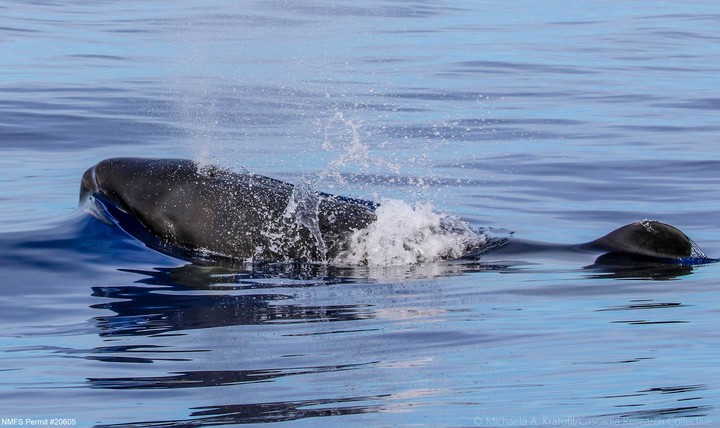Breaching the line: Persistent organic pollutant concentrations exceeding thresholds in Hawaiian false killer whales

Abstract
False killer whales (Pseudorca crassidens) are are long-lived, slow to mature, apex predators, and therefore susceptible to bioaccumulation of persistent organic pollutants (POPs). Hawaiian waters are home to three distinct populations/stocks: pelagic, Northwestern Hawaiian Islands (NWHI), and main Hawaiian Islands (MHI). Following a precipitous decline over recent decades, the MHI population was listed as “endangered” under the Endangered Species Act in 2012. This study assesses the risk of POP exposure to these populations by examining pollutant concentrations and patterns from blubber biopsy samples (n=56) related to life history characteristics (i.e., sex, age class, reproductive status). Samples (MHI n=45, NWHI n=8, pelagic n=3) were analyzed for polychlorinated biphenyls (PCBs), dichlorodiphenyltrichloroethanes (DDTs), polybrominated diphenyl ethers (PBDEs), and some organochlorine pesticides. Pollutant levels were generally similar among populations. For MHI individuals, 66.7 percent of all whales (all adult males, 50% of adult females, and 66.7% of juveniles/subadults) contained summed PCB concentrations greater than or equal to the suggested threshold for associated deleterious health effects in marine mammals. Based on long-term sighting histories, 8 of 24 MHI adult females have never been reported to give birth. These individuals are likely characterized by reproductive senescence associated with age, or impaired reproductive capabilities linked to high POP exposure. Juvenile/sub-adults had significantly higher concentrations of some contaminants than those measured in adults. Further, for individuals biopsied twice over 2-3 years, adults accrued most POPs while a subadult female lost some POPs (e.g., PCBs, DDTs). This loss is likely attributed to growth dilution, where metabolized contaminants are redistributed to other organs or within the bloodstream. Consequently, juveniles/sub-adults may be at greater risk to negative health effects (e.g., thyroid disruption, immunocompetence) as they undergo critical physiological development. Our results provide invaluable insight into the ongoing risk these contaminants pose to the MHI population’s viability, as well as consideration of risk for the NWHI and pelagic stocks. Additionally, MHI whales exhibit cohesive social organization that could make them more vulnerable to increasing anthropogenic threats; it is important to account for this vulnerability when assessing population-level concerns.